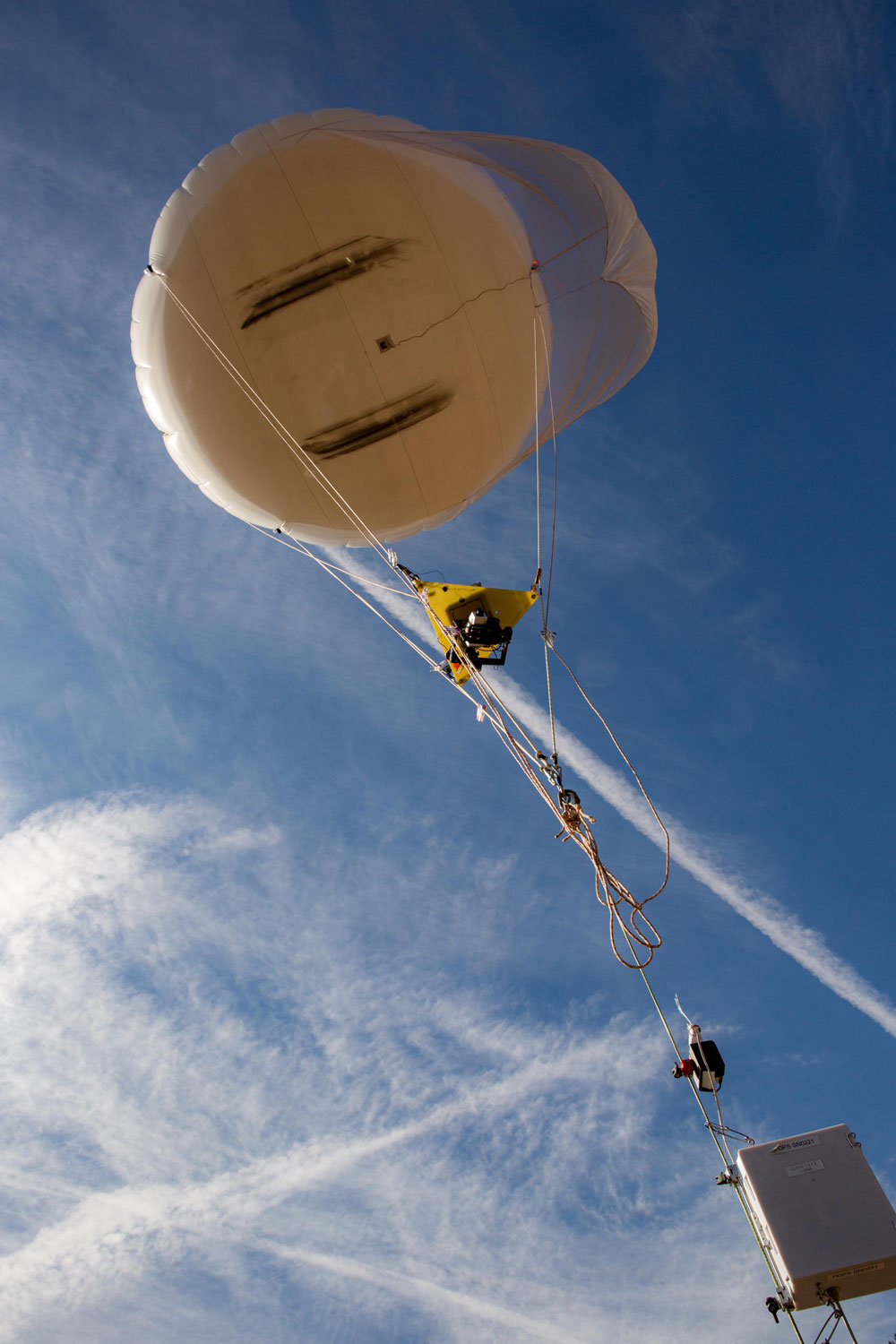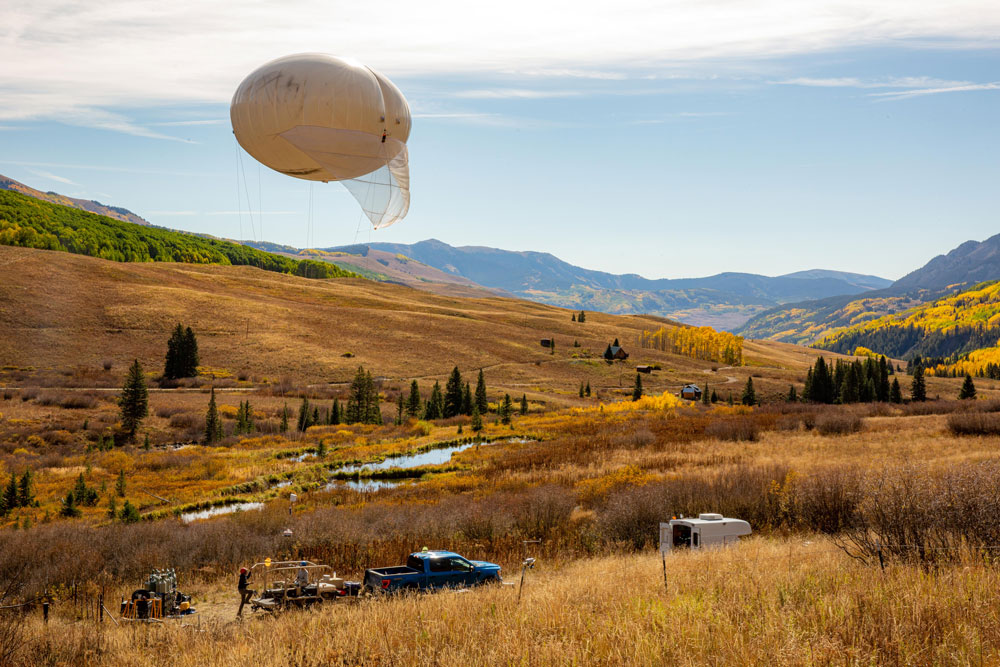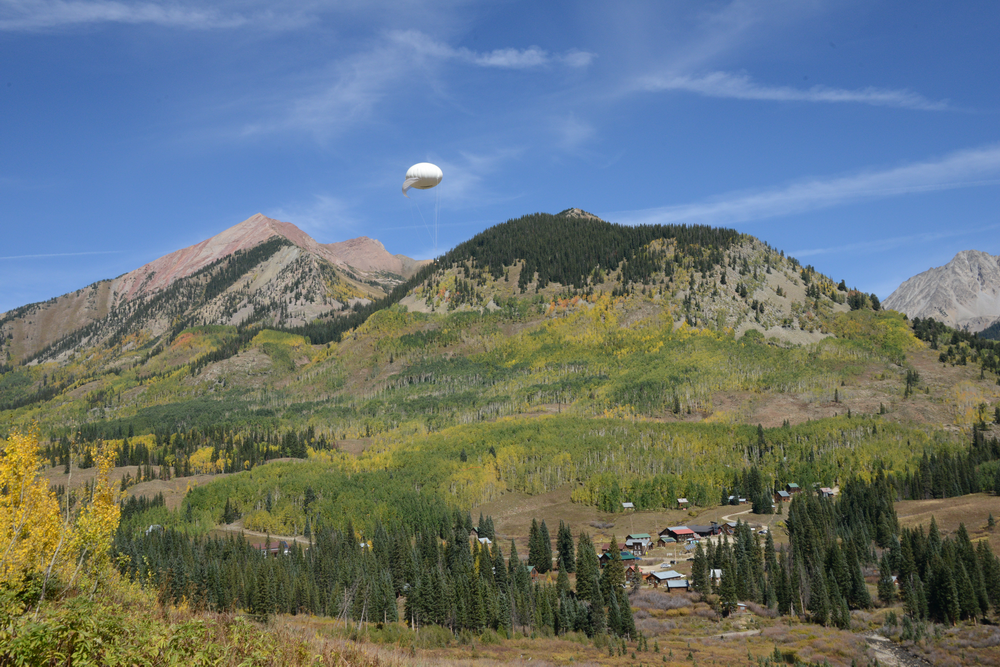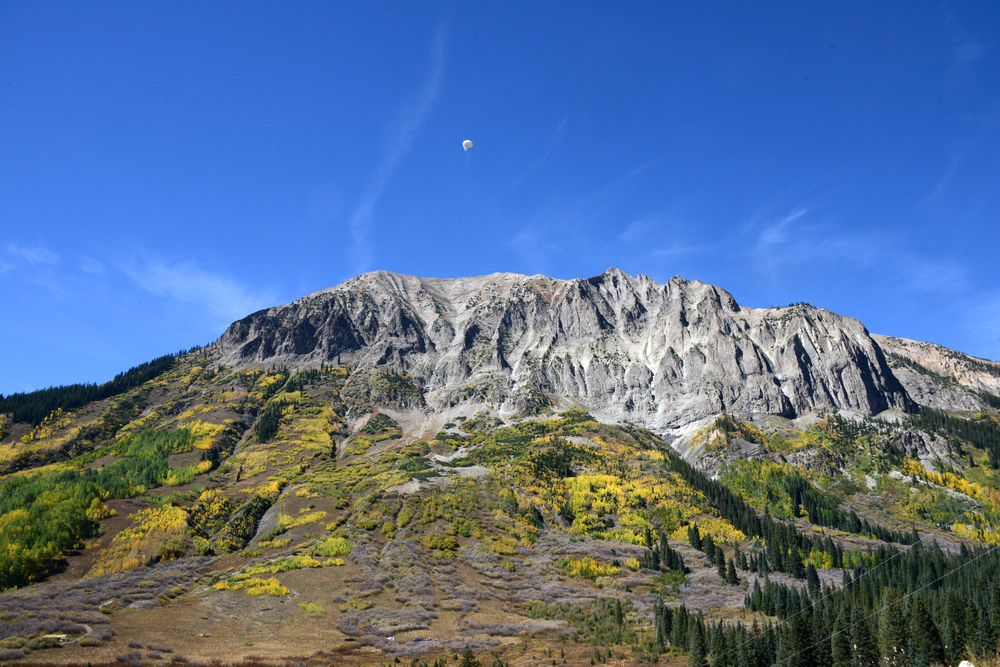TBS Put to the Test for SAIL Science Flights
Published: 21 October 2021
Editor’s note: Dari Dexheimer, who manages tethered balloon system flights for ARM, provided information for this post.

From September 19 to 24, the tethered balloon system (TBS) team from Sandia National Laboratories in New Mexico was in Gothic, Colorado, to conduct test flights for the Surface Atmosphere Integrated Field Laboratory (SAIL) campaign.
Dari Dexheimer, who manages the TBS flights for ARM, and technicians Casey Longbottom, Brent Peterson, RaeAnn Cook, and Garth Rohr completed the flights in Gothic.
The TBS team performed flights at a high altitude—to more than 1.3 kilometers (about 4,265 feet) above ground level—with full payloads. The weather cooperated and allowed the flights to finish ahead of schedule.
Instruments deployed during the flights included the automated Size- and Time-resolved Aerosol Collector (STAC), a guest instrument from the Environmental Molecular Sciences Laboratory (EMSL). The STAC collects aerosol particles in the size range of 0.1-0.5µm. This instrument is also able to step through a series of 20 small collection impactors during flight, which provides time-resolved particle sampling.
The TBS also held cameras that are used to image various terrain temperatures over time.
Other instruments included a portable optical particle spectrometer (measuring aerosol size distribution); a condensation particle counter (measuring total aerosol concentration); a distributed temperature sensing optical fiber; radiosondes (measuring pressure, temperature, and relative humidity); and wind speed and direction sensors.
While in Gothic, the TBS team met with officials from the Rocky Mountain Biological Laboratory, which is hosting the ARM Mobile Facility deployment for SAIL, and campaign investigators to review possible winter TBS site options and survey sites for safety and local conditions.
Systems must be in place before road access is restricted for the winter. The TBS team will work to deploy the systems to Gothic by early November before the snow season really gets underway.
In the winter to early spring, TBS will operate within Gothic at the Rocky Mountain Biological Laboratory for two to three deployments of roughly 10 days each. The deployments will be targeted to collect in situ measurements before and after winter storm events and to coincide with National Snow and Ice Data Center aircraft missions.
The TBS missions will measure the thermal and aerosol stratification of the lower atmosphere as well as surface snow cover evolution and variability. These measurements will provide insights into the seasonal relevance of surface-based aerosol measurements, and they will be used to improve remote sensing retrievals and estimate atmospheric stability.



Keep up with the Atmospheric Observer
Updates on ARM news, events, and opportunities delivered to your inbox
ARM User Profile
ARM welcomes users from all institutions and nations. A free ARM user account is needed to access ARM data.


















